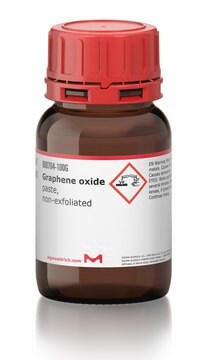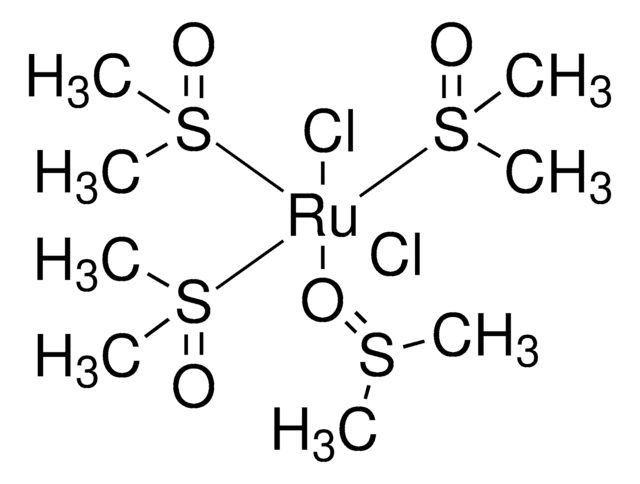84050
Ruthenium(III) chloride hydrate
38.0-42.0% Ru basis
Sinónimos:
Ruthenium trichloride
About This Item
Productos recomendados
Quality Level
form
powder
reaction suitability
core: ruthenium
reagent type: catalyst
concentration
38.0-42.0% Ru
SMILES string
O.Cl[Ru](Cl)Cl
InChI
1S/3ClH.H2O.Ru/h3*1H;1H2;/q;;;;+3/p-3
InChI key
BIXNGBXQRRXPLM-UHFFFAOYSA-K
¿Está buscando productos similares? Visita Guía de comparación de productos
Application
- Photocatalytic disinfection: A study highlighted the synthesis of silver-ruthenium bimetallic zinc oxide nanocomposites using Callistemon viminalis leaf extract. These nanocomposites demonstrated effective photocatalytic disinfection properties against Escherichia coli, presenting a promising application in antimicrobial coatings (Jha et al., 2024).
- Photoelectrocatalysis for hydrogen production: RuO(2)/TiO(2) heterostructures were investigated for their potential in photoelectrocatalytic hydrogen evolution, combining experimental and theoretical approaches to highlight the efficiency of ruthenium-based materials in renewable energy technologies (Kaikhosravi et al., 2023).
- Electrochemical applications: The study explored the electrochemical properties of mixed RuOx/MnOx electrodes, prepared by thermal decomposition from different precursors, showing significant implications for their use in energy storage and conversion systems (Petrucci et al., 2022).
- Catalysis and electrocatalysis: Unprotected and interconnected Ru(0) nano-chain networks were examined for their advantages in catalysis and electrocatalysis, illustrating the benefits of unprotected surfaces for improved reaction kinetics and efficiency (Anantharaj et al., 2016).
Other Notes
signalword
Danger
hcodes
Hazard Classifications
Acute Tox. 4 Oral - Aquatic Chronic 2 - Eye Dam. 1 - Skin Corr. 1B
Storage Class
8A - Combustible corrosive hazardous materials
wgk_germany
WGK 3
flash_point_f
Not applicable
flash_point_c
Not applicable
ppe
Eyeshields, Faceshields, Gloves, type P3 (EN 143) respirator cartridges
Elija entre una de las versiones más recientes:
¿Ya tiene este producto?
Encuentre la documentación para los productos que ha comprado recientemente en la Biblioteca de documentos.
Los clientes también vieron
Nuestro equipo de científicos tiene experiencia en todas las áreas de investigación: Ciencias de la vida, Ciencia de los materiales, Síntesis química, Cromatografía, Analítica y muchas otras.
Póngase en contacto con el Servicio técnico













